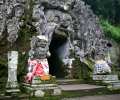The Travel Bug
Australia

|
Sydney is the largest and most cosmopolitan city in Australia, with lots of attractions for residents and tourists alike. Much of the action is based around its large and picturesque harbour, which features boat rides, swimming and sightseeing, either from the water, the shore, or high up on the magnificent bridge which straddles the harbour. |
|
Far North Queensland cities like Cairns and Townsville are gateways for the Great Barrier Reef, where the water is extraordinarily clear, and the reef is full of surprises, such as remarkably colorful giant clams. From Cairns you can explore the surrounding attractions of the tropical rainforest, while Townsville and Magnetic Island, just offshore, are home to animals of the dry forest, like echidnas and koalas. |

|

|
Delight yourself with the comical antics of those adorable fun-loving Australians. Who can forget such classics of "dinkum Aussie culture" as gambling on the outcome of toad races? |
Belize
|
Belize is the only English speaking country in Central America and a good introduction to the pleasures of this area of the world. Tucked away below the south-eastern edge of Mexico, its relatively undeveloped attractions are ideal for adventurous travellers. |

|
Brunei
|
Still, the oil keeps flowing, and the largesse trickles down to the general populace in the form of free education, free health care, and no taxes. A little bit of the money even came my way, as I spent a month working in Brunei, commuting on giant helicopters to the oil rigs. |

|
Cambodia
|
When the Khmer Rouge were toppled in 1979, the country's infrastructure had been largely ruined by war and the Khmer Rouge's own disdain for modernity and utopian longing for an agrarian Angkoran paradise. This made travel on the country's terrible roads difficult even during the dry season, but in recent years there have been huge improvements which today make it practical to travel around and visit Cambodia's many scenic highlights and see its people living their lives with relative freedom and hope for the future. |

|
Canada
|
However
there is some magnificent scenery, with mountains, forests and lakes, and
the coastlines are home to interesting maritime birdlife.
|

|
Costa Rica
The Czech Republic

|
The Czech Republic has some of the most attractive architecture in the whole of Europe, with Gothic cathedrals, Renaissance towns, castles and chateaus scattered all around the country. Even without travelling around, you can sample a lot of these cultural treasures by spending a few days in the very lively and pedestrian friendly capital of Prague. |
|
There's plenty for nature lovers, with mountains, forests and hiking trails to enjoy. The main reason I came here was to attend the 2006 Czech International Air Fair, which featured a dizzying array of modern military hardware from a dozen or more European countries; however I also made time to enjoy the outdoors, spending most of a day in the forest photographing mushrooms and toadstools, as well as some interesting wildlife, including the first salamander I've ever seen. |
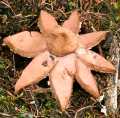
|
Egypt
|
Egypt has been a tourist destination for longer than almost anywhere else on the planet. Napoleon's short-lived occupation at the start of the 19th century, which included a very large team of scholars and researchers, created a huge amount of interest throughout Europe, and laid the groundwork for many famous authors who followed and spread stories of the wonders to be found here. Then in 1869 an enterprising Englishman called Thomas Cook pioneered the age of mass tourism in Egypt, which has continued to this day. |

|

|
However Napoleon and those who followed were by no means the first or only people who had been drawn to the extraordinary relics that are found here. So while you can certainly see French grafitti inside the Red Pyramid and British grafitti on the Temple at Philae, there is even more ancient grafitti on artifacts such as this Shrine of Hathor which is now at the Egyptian Museum in Cairo. This country is jam packed with monuments and artifacts. At times it seems as if there are almost too many ancient wonders in the country, and if you're not careful you might find yourself secretly dreading your next visit to that awesome temple or tomb. |
|
One wonder which earlier tourists certainly didn't experience was the beauty along Egypt's Red Sea coastline. Modernites who've had one too many mastaba, pylon or hypostyle hall can come here to chill out on a beach, shore dive on a reef or enjoy the dramatic desert scenery of the Sinai Peninsula. It's a special delight for those who choose to enjoy the marine life here, because not only is everything very accessible, but many of the species found here live nowhere else. |

|
Fiji

|
The island nation of Fiji has a huge amount of variety, with sandy beaches, flat coral islands and large mountainous volcanic islands with thick forests and waterfalls scattered across a large area of the South Pacific. |
|
Most tourists restrict themselves to their hotel or resort, and never experience this interesting land or its friendly people and culture. |

|
Guatemala
|
Years of pro and anti communist civil war have left Guatemala economically backwards and devastated, a major victim of the Cold War. The killings have cheapened life here, and the often violent crime which continues to this day makes this a destination for only the most adventurous traveller. |

|
|
For those brave or foolhardy enough to come here, it's possible to see some of the local bird and insect species as you move around the ancient city. |

|
Indonesia
|
The main island of Java is less well trodden by foreigners, but equally fascinating, with spectacular Buddhist and Hindu temples dating back hundreds of years, as well as geographical wonders mostly related to the country's volcanic history, which continues to this day with more than 130 active volcanoes, the most of any country. Mount Bromo ranks as one of the world's most spectacular natural sights, and it's only one of the highlights of Indonesia. |

|
Japan
|
The ancient culture of Japan lives on strongly even amidst the modernity and ugliness of its commercial buildings and the practical needs of its citizens. You only have to scratch the surface of a thoroughly industrial looking city like Tokyo or Kyoto and out pop ancient temples and shrines. |

|
Malaysia
|
Nestled in amongst the modernity of Kuala Lumpur and other cities around the Malay Peninsula, there's still plenty of colonial architecture to admire, as well as mosques and temples belonging to the Indian and Chinese communities. |

|

|
In spite the best efforts of its leaders, Malaysia still hasn't succeeded in wiping out the extraordinary birds, butterflies and other wildlife which inhabit this part of the world, giving Malaysia a mixture of modern, colonial and natural sights. |
Mexico
|
Mexico has almost 100 million inhabitants, making it the second most populated country in Latin America, and enough of those inhabitants are crammed into Mexico city to make it the second most populated city in the world, after Tokyo. Its huge population has made this a sprawling, infuriating city where even a day in the park feels more like a visit to a circus or amusement center, and the chaotic traffic causes the air to regularly exceed basic health standards. Despite all of the hassles, it's worth visiting to see its museums, and ancient sites like the Aztec ruins of the Templo Mayor alongside Spanish colonial architecture and modern world-class buildings. |

|

|
There's plenty more to do in the areas surrounding Mexico city, like visiting natural sights such as the massive caves called the Grutas de Cacahuamilpa, and the spectacular volcano Popocatepetl, snow-covered even in summer despite being in the tropics. There are also human-made wonders, including attractive Spanish colonial cities and many monumental structures built before the arrival of the Spanish. As well as the famous pyramid complex at Teotihuacan, there are other pre-hispanic cities such as Xochicalco, Cacaxtla and Xochitecatl, with restored buildings and remarkable artwork. Further south, the Yucatan Peninsula is home to amazing Maya cities, some of which are extraordinarily well preserved |
|
Although most of the country's natural environment and wildlife has been devastated by the needs of its large population, there are places scattered around the country where you can still find some of the original wildlife, like flamingos and other waterbirds living on the Yucatan Peninsula. Even in more populated areas it's possible to find lots of beautiful smaller creatures such as butterflies, spiders and lizards, living on the fringes of human society. |

|
New Zealand - my homeland

|
At the ends of the earth, New Zealand is the first country to see each new day. Fifteen hundred miles and three hours by jumbo jet from its nearest neighbour, New Zealand's native wildlife is unique and benign with no land mammals, no snakes and only one venomous spider, which never bites anyone. |
The Philippines
|
The Philippine Islands consist of a very large collection of islands with a variety of geography, including lowland forests and jungles, many active volcanoes, limestone caves and mountain ranges covered in picturesque terraced rice paddies. The human inhabitants add to the interest too, with many colorful indigeneous cultures as well as the hustle, bustle and noise of the modern capital city of Manila. |

|
 |
There's plenty of fascinating wildlife to see for people willing to leave the cities and beaches, including endemic animals like this Philippines Tarsier, one of the smallest primates in the world, with the largest eyes of any mammal relative to its size. Even the local insect life is fascinating, with attractive butterflies and dragonflies, jewel-like beetles and weirdly shaped ants and other critters. |
|
Since I used this trip to learn to scuba dive, I didn't spend as much time on the local insect life as I normally do, however I did spend a lot of time underwater, including a trip to the town of Donsol to snorkel with whale sharks, the largest fishes in the world. There are many pristine dive sites around the country, so be sure to check out the underwater highlights of the Philippines and an entire page of the incredibly colored and shaped sea slugs of the Philippines. |

|
Russia
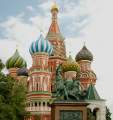
|
Russia might no longer be the sinister and inaccessible place it once was, but it's still a long way off the beaten track for anyone who doesn't live in Europe. And travellers who have filled out the Russian visa papers can be forgiven for thinking that this place is still in a Cold War time warp. It's a shame, because there's a wealth of interesting architecture and scenery in the country, and although I only had an opportunity to see some of the highlights of Moscow and the "Golden Ring" towns, it has left me with a desire to return and see other parts of the country. |
|
My visit wasn't made primarily for the architecture or scenery, instead I came as a media representative to photograph the exotic military and civilian aircraft at the 2005 MAKS airshow at the once secret Zhukovsky airfield south of Moscow. As well as classic Russian fighter aircraft like the MiG-29 "Fulcrum" and Su-27 "Flanker", there was also a good turnout of helicopters like the Ka-50 "black shark" gunship, Ka-31 "Helix" and Mi-8 "Hip", as well as several jet display teams from France, Italy and Russia itself. |

|

|
For hardcore aviation enthusiasts like myself there's another must see site near Moscow, the Russian Air Force museum at Monino. As well as a very complete collection of Cold War fighters and bombers, there's also a collection of American lend-lease aircraft from world war two, and a large number of historic Russian helicopters, including the extraordinary V-12 "Homer", by far the largest helicopter in the world ever to take to the air. |
Singapore
|
Right on the doorstep of peninsula Malaysia, and only 100 miles north of the equator, Singapore is yet another product of British imperial planning. |

|
The Solomon Islands

|
Struggling to develop a national identity on top of traditional tribal loyalties, the Solomon Islands has recently experienced a major period of unrest and upheaval. Its location means that it is fated to remain a backwater, with tourists as a tiny but economically significant minority. Hopefully the genuine friendliness and helpfulness of the local people will continue despite the difficulties, and they'll find a way to keep this small tropical paradise peaceful and pleasant. |
Thailand
|
Thailand is easily the most popular tourist destination in south-east Asia, and for good reason. The heady mix of sunshine, beautiful beaches, spectacular scenery, interesting history and fascinating ancient and modern cultural artifacts means that there's something for every taste, and the friendly local people makes it all readily accessible without fear of losing life or limb. |

|
Trinidad and Tobago
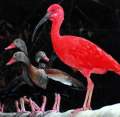
|
The original inhabitants of Trinidad called it Lere, "Land of the Hummingbirds", and it's still a mecca for bird and nature lovers, with 400 species of birds, 600 species of butterflies, 50 reptiles and 100 assorted mammals such as agouti, armadillos, and monkeys. |
|
The people of Trinidad and Tobago have the largest Carnival in the Caribbean, which gives them an excuse for two months of unbridled excess. They're also more than happy to help the innocent tourist with his or her excess - excess money, that is. |

|

|
Tobago's no slouch in the tropical bird stakes, but whereas Trinidad lacks coral reefs because of its proximity to several large South American rivers, Tobago has spectacular reefs and underwater sights, including the largest brain corals in the world. |
Turkey
|
Turkey straddles Europe and Asia, a strategic location which has made it a great power centre from Roman times right up to the current day. The religious life of the great imperial city of Byzantinium, which later became Constantinople and then Istanbul, has been tempestuous, with pagan worship ousted by Christianity and Christianity in its turn ousted by Islam. Relics from all these periods are still to be seen around Istanbul, including the unmatched architectural achievements of the great church turned mosque known as Aya Sofya. |

|
|
Perhaps surprisingly, a ferry trip along the Bosporus is also a good way to see some of the local wildlife, especially the seabirds which make a living catching fish in its clear waters. |
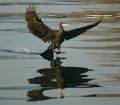
|
United Kingdom

|
The famous wit-about-town Dr Johnson said "If you're tired of London then you're tired of life", and what was true in his day is still true today. Of course Johnson and Bosley would have no problem recognizing most of the landmarks that people associate with London. The historical sights scattered around the centre give the place a familiar and well-worn feeling. It might not be flashy, but this slightly shabby place is undeniably one of the world's truly great and memorable cities. |

|
For the noble, sensitive and artistic souls among us, museums stuffed full of treasures stolen from all over the world! |
Vanuatu
|
Vanuatu is one of the least familiar of the Pacific Island nations, but also one of the most interesting. Previously known as the New Hebrides, Vanuatu was ruled by the British and the French - at the same time! Formally called the Condominium, this style of government was known locally as the Pandominium. The capital, Port Vila, is on the island of Efate and is one of the most beautifully situated cities in the Pacific, beside a coral-filled and island-speckled harbor. |

|
Vietnam

|
Vietnam has numerous scenic attractions for visitors, from the highland areas with their scenic beauty and interesting ethnic cultures, to limestone formations and caves in places such as Tam Coc and Halong Bay, to classic white sand beaches with palm trees and crystal blue waters. There's also a considerable amount of historical architecture, including various sites in Hanoi such as the Temple of Literature, through to the emperors' tombs and remnants of their Chinese-style imperial city in Hue, and the little known Cham Towers, which are of Hindu origin. |
|
Of course, modern-day Vietnam is dominated by history of another kind, namely the Vietnam War, which is known locally as the American War. For the Vietnamese this was just another episode (and not even the most recent) in a struggle for independence which has continued off and on for over a thousand years. There's extraordinarily little obvious resentment in Vietnam towards foreigners, and many tourists make a point of visiting military museums in Hanoi and Saigon. If you take some internal flights within the country then you might also be lucky enough to see the Vietnamese Air Force in action. |

|
 |
I made a real point of visiting some of Vietnam's few remaining natural areas while I was there, so I could photograph some of the extraordinary creatures that live in the world's tropical regions. Although it was the wrong time of year to dive on Vietnam's reefs, I was still able to photograph many colorful butterflies and dragonflies, and I also saw many equally attractive moths and caterpillars, as well as beetles and spiders. Despite being the cold season there were still many lizards about, especially in the south, as well as frogs and toads. |














